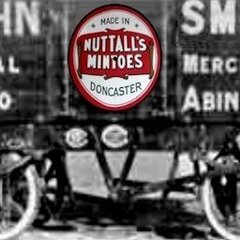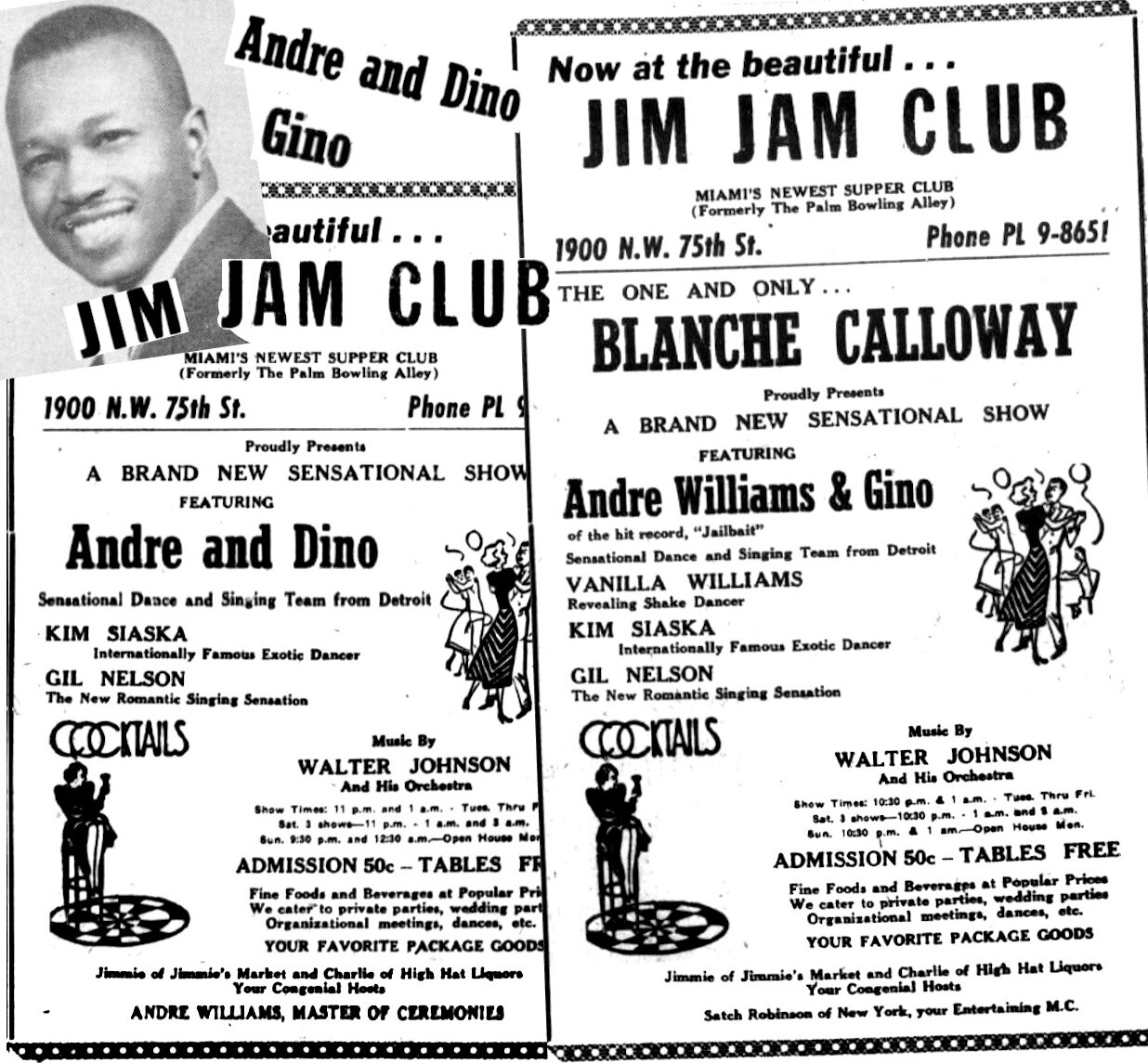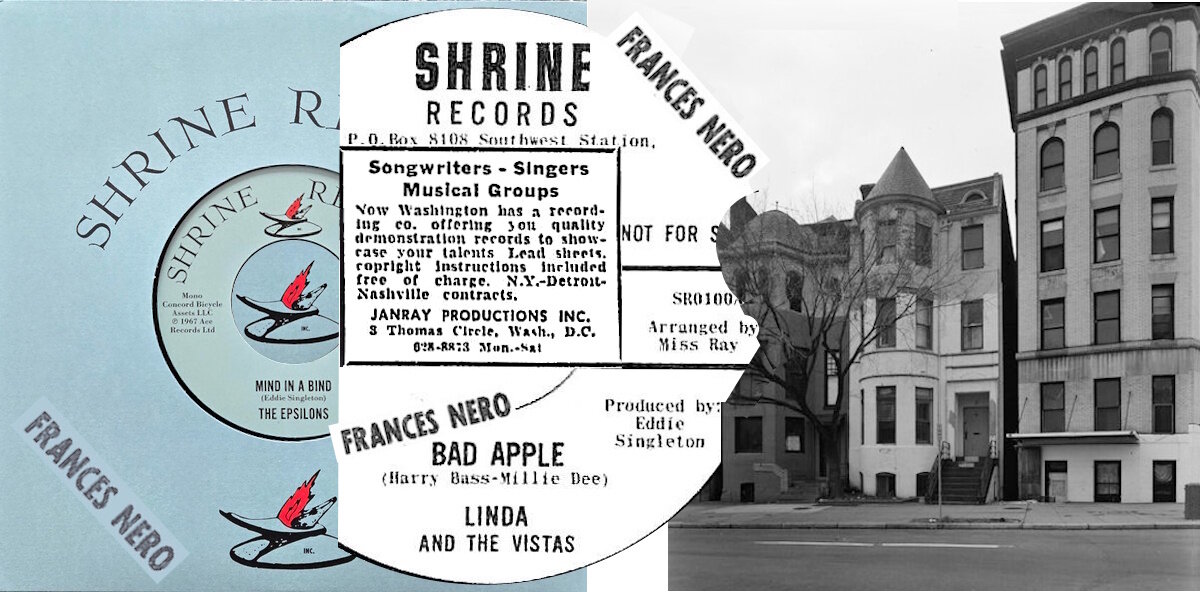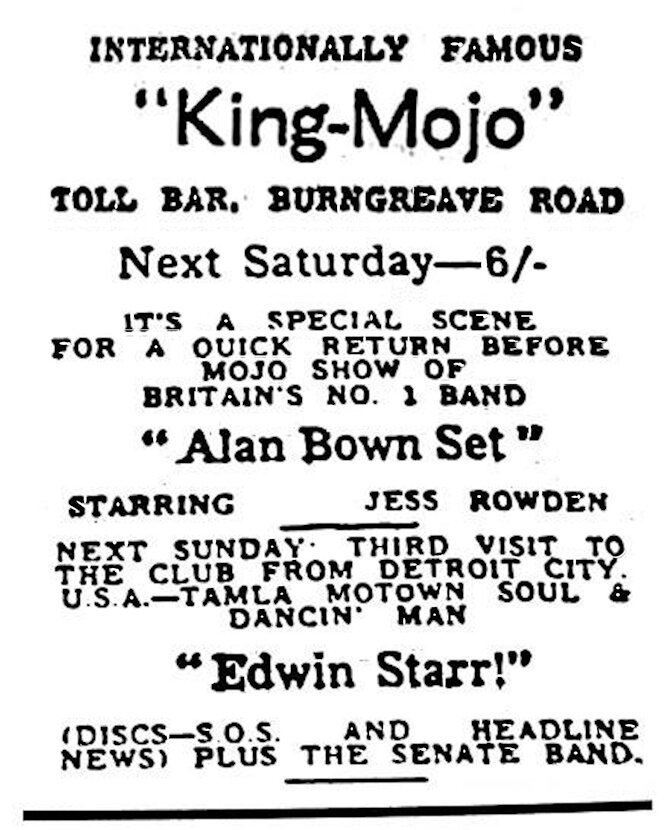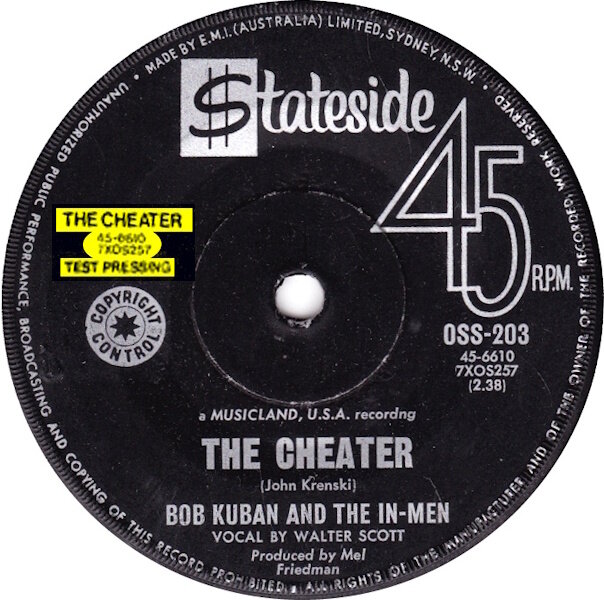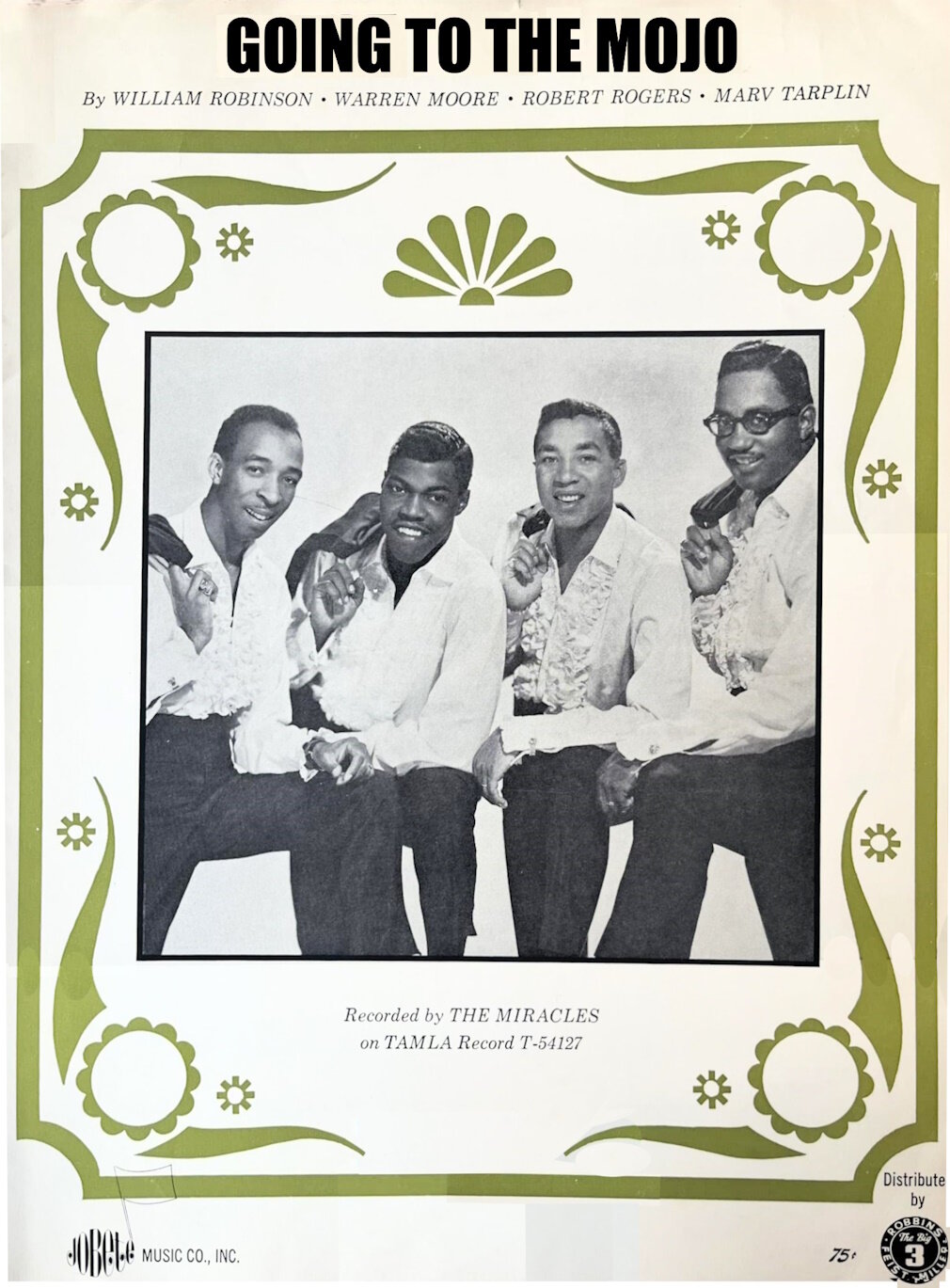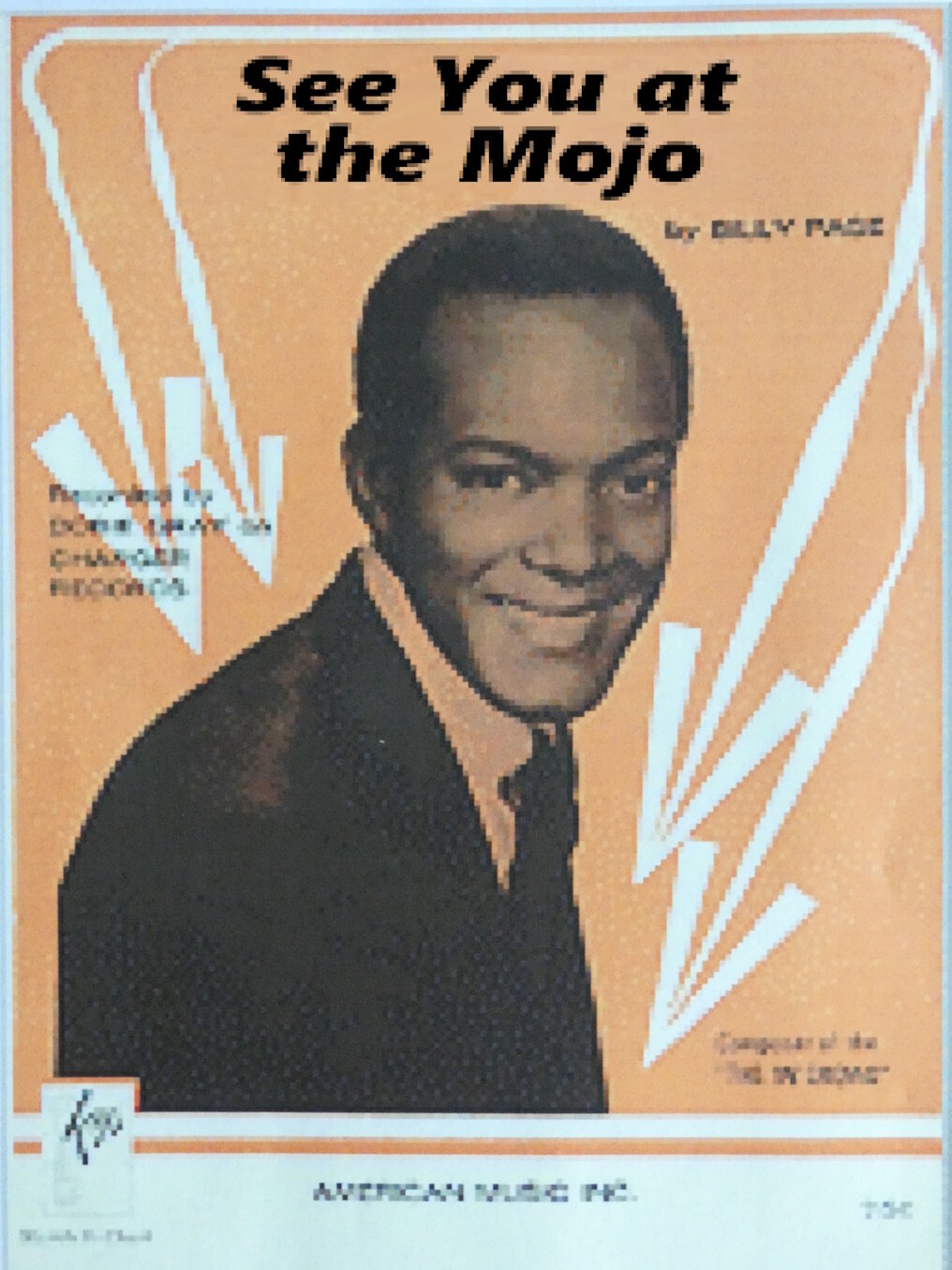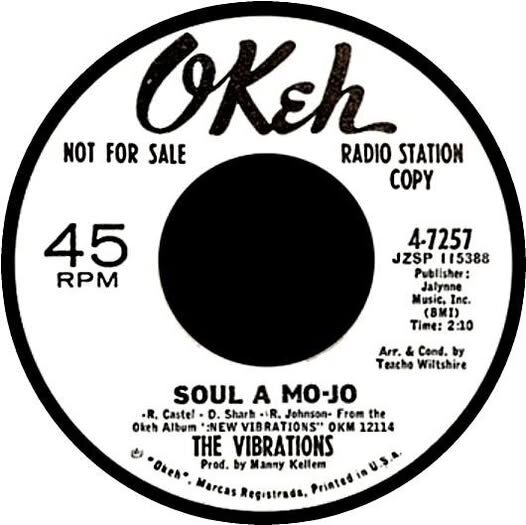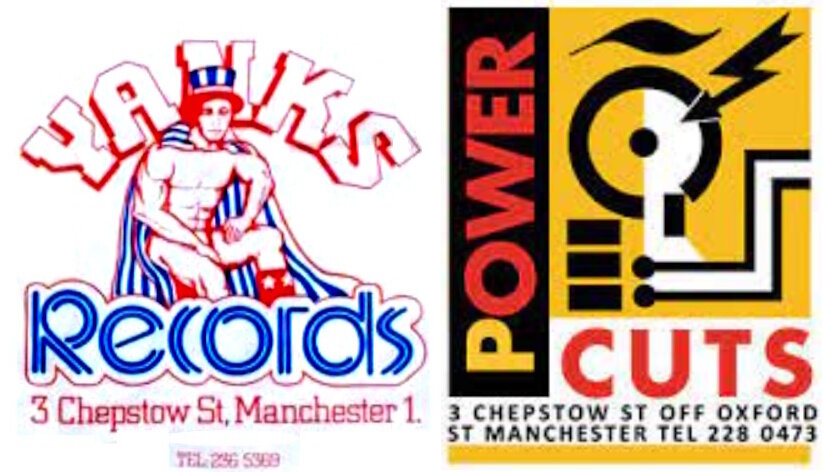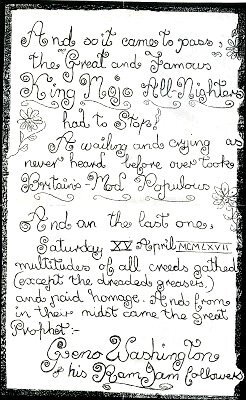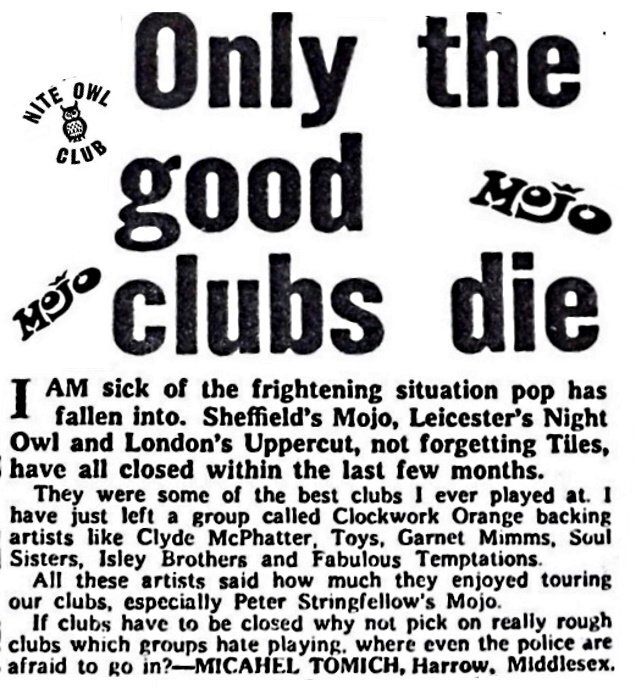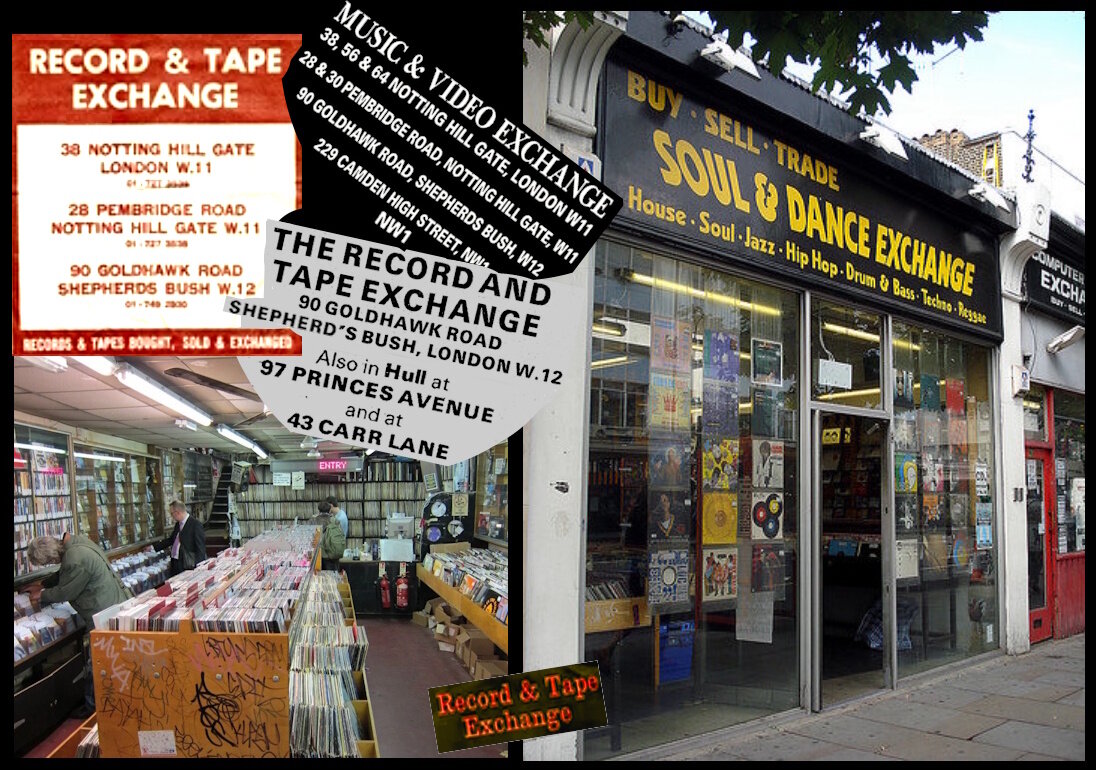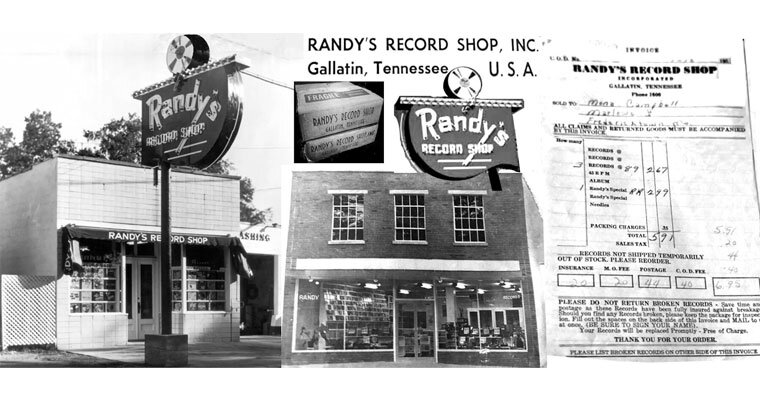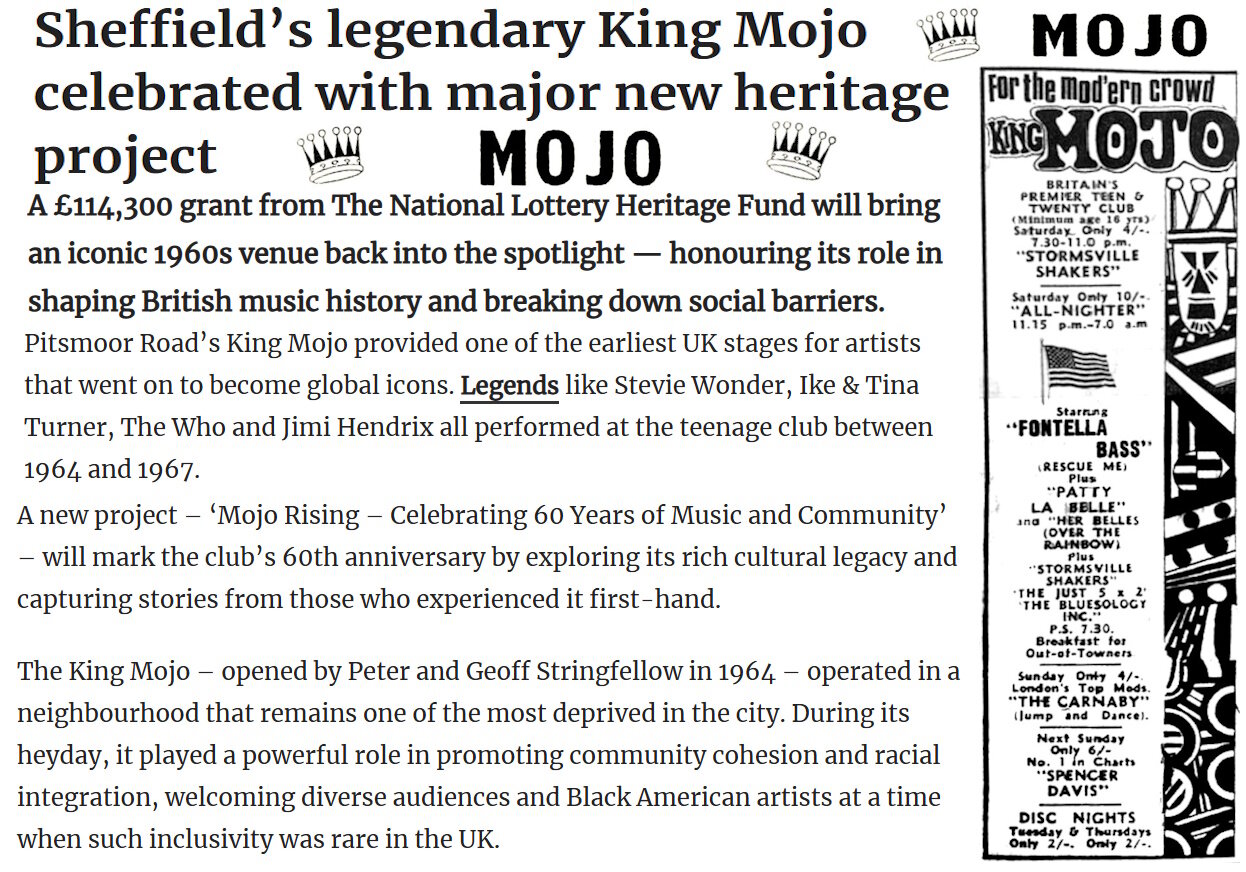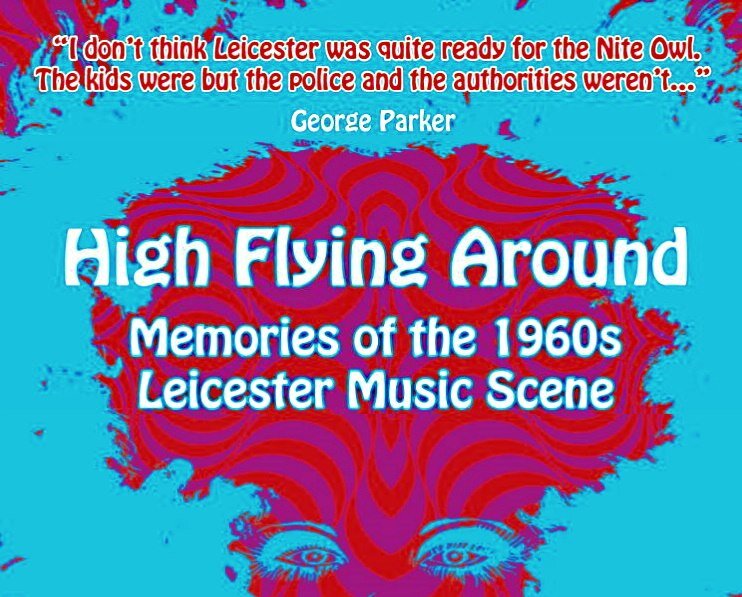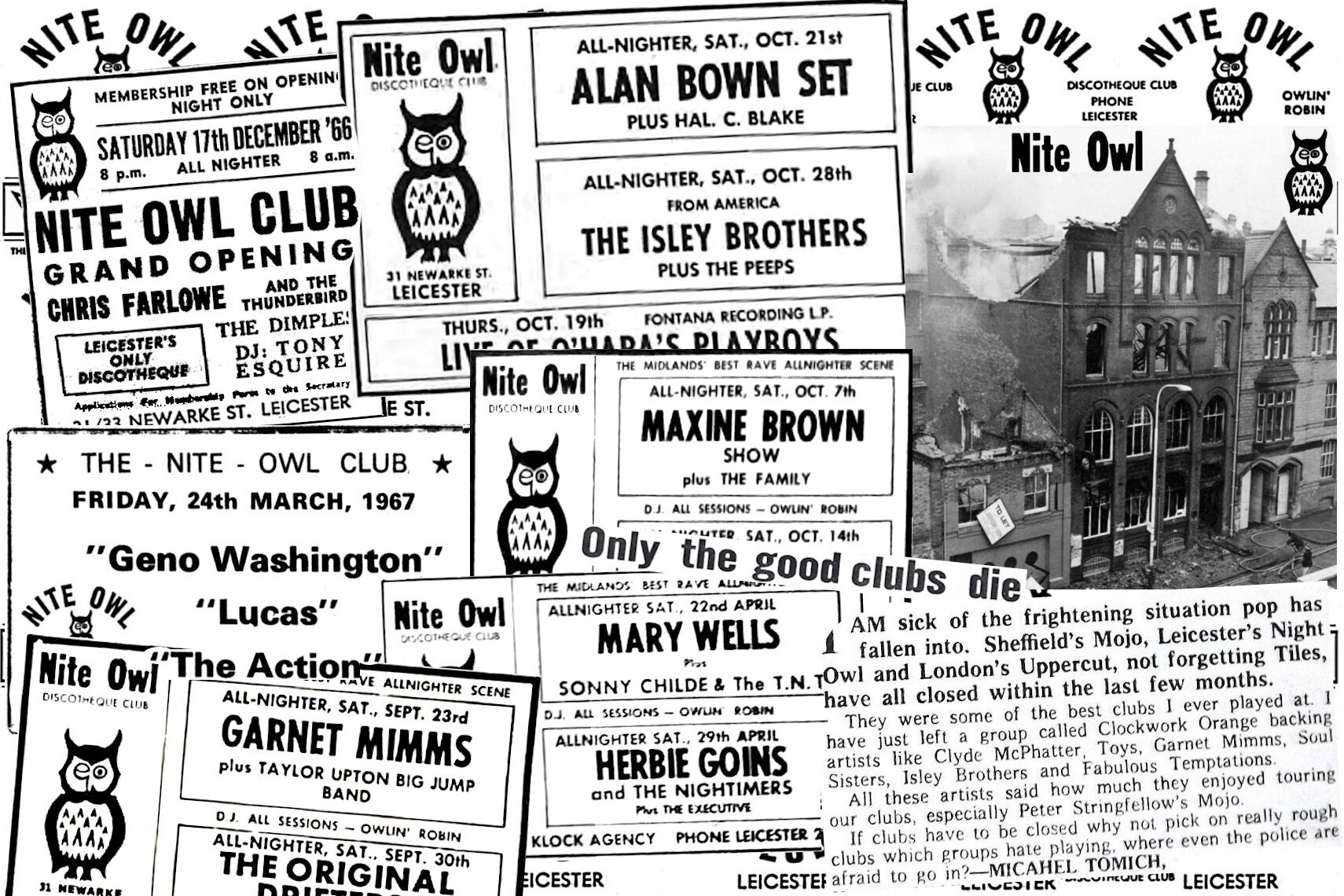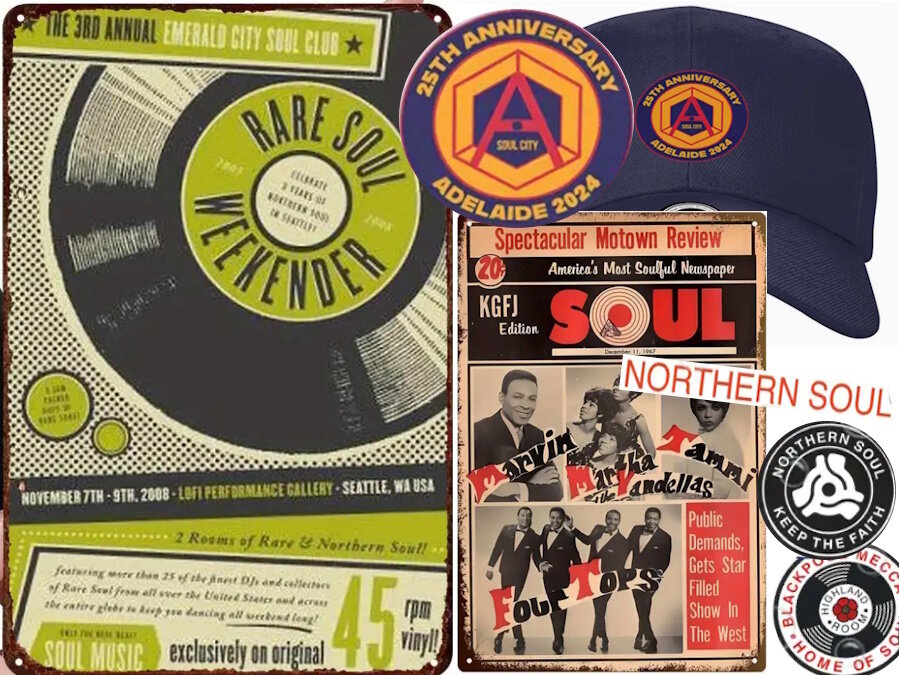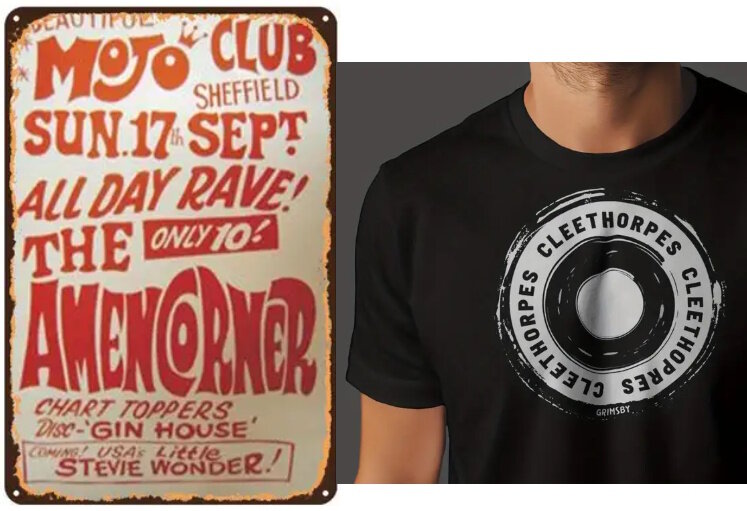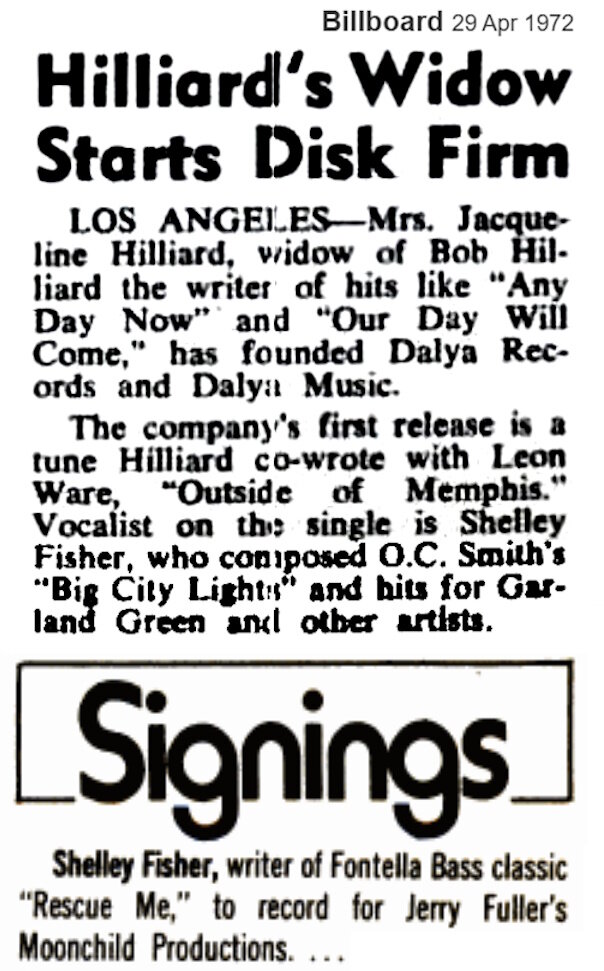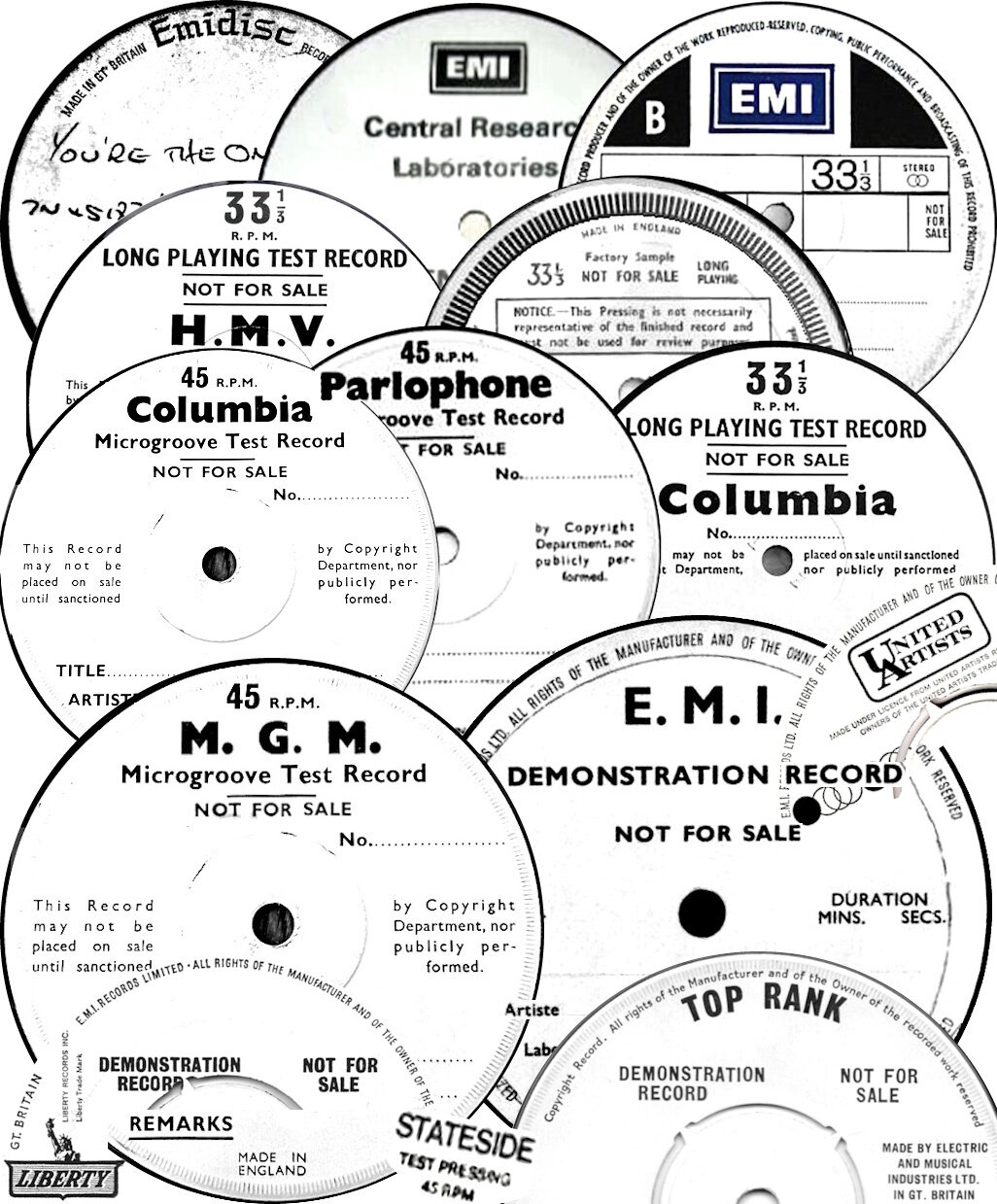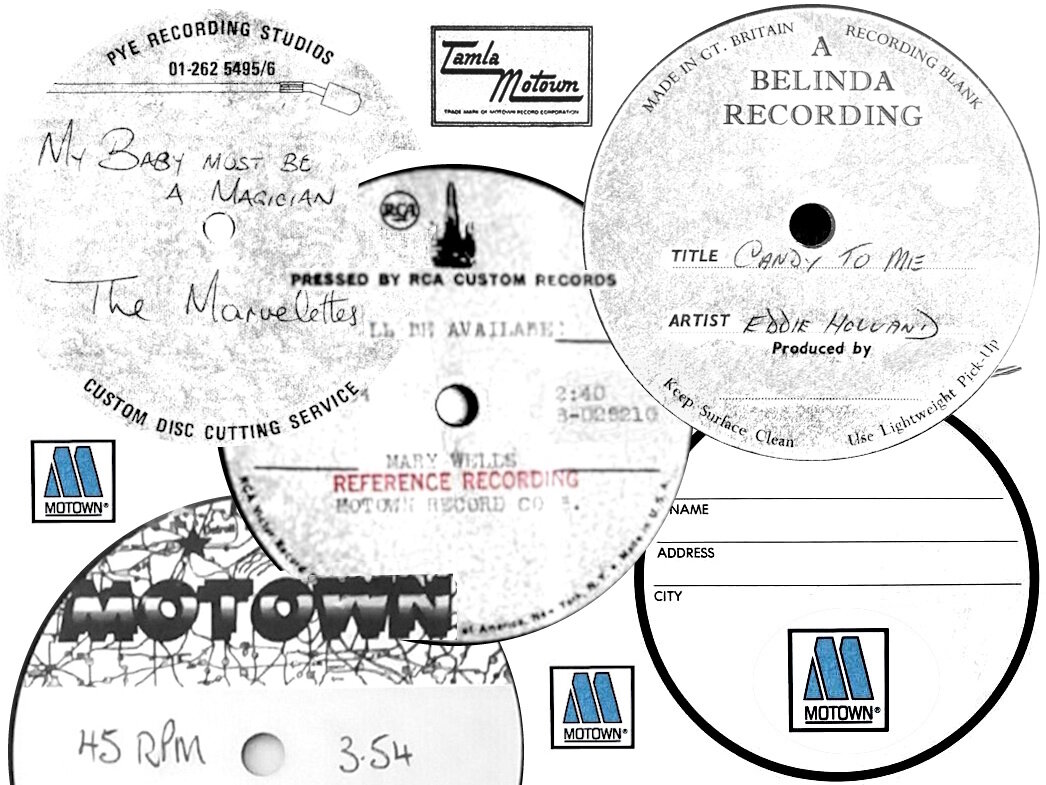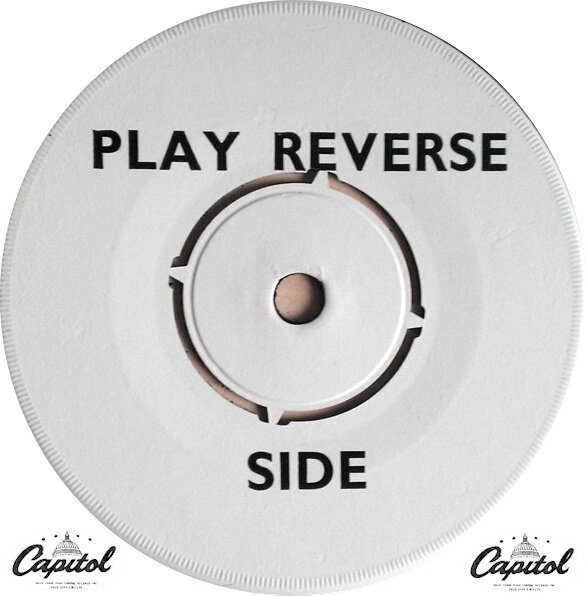Everything posted by Roburt
-
Francis Nero on Shrine ?
As I stated in the opening post on this thread, the content of the interview was taken up on Soulful Detroit with a number of posts discussing her information & making some assumptions. Both Eddie & Ray were involved with Gino's tracks in 68 and so it was assumed both were involved with Frances & Gino's duet cut too.
-
Francis Nero on Shrine ?
The interview just stated she cut for Eddie & Ray, it was just assumed this was for Shrine. No one on Soulful Detroit picked up on the fact that Gino cut for the pair in Detroit in 68. As one of Frances's cuts was a duet with Gino, her cuts must have been done at the same time as his tracks that escaped on Crazy Horse. But as they were both cutting for Ray & Eddie, you can see why the Shrine connection was made. Frances just got the one session for Motown (some folk also assumed the cuts she did with Ray & Eddie might have been for Motown) and then was left to flounder. Gino had also been dropped by Motown (much earlier) & then had been with (& then dropped) by Golden World. Of course, Gino had been around for ages, cutting in conjunction with Andre Williams (also Motown connected) as far back as 1957/58/59. The two of them also went on the road together (although getting his name correct seemed a challenge for newspaper typesetters). ... https://www.soulexpress.net/deep110.htm#francesnero
-
Francis Nero on Shrine ?
NOTE the title of this thread is ... . . . . . Francis Nero on Shrine ? ... . . . . ON SHRINE QUESTIONMARK INFO TAKEN FROM an excellent interview conducted by Heikki Suosalo (as with his other interviews, available on line) & subsequent discussion on Soulful Detroit After leaving Motown, Frances Nero made some recordings with Raynoma Gordy and Gino Parks at Shrine Records, which went unreleased. One was "Lady In Waiting", a duet with Gino Parks. Francis also cut three other songs at the time. . . . That says AT SHRINE, however on further investigation it seems these tracks were cut for Ray & Eddie but after Shrine had gone out of business. The solo tracks Gino cut for Ray & Eddie were made in a Detroit studio it seems. Were the master tapes for these tracks by Frances ever unearthed ? (seems they'd have been located in Detroit & not DC). Is it known what the other three songs were ?
-
Restriction on Artists 'set'.
I show details of Edwin's visit to the Mojo (see ad in last post) in the listing below. As a further indication to how popular he was as a live draw back then just see how often he played certain places -- Derby & Nottingham being just 2 of these ... BUT notice also how his backing band kept changing (due to other existing bookings for the UK bands) ... how Edwin coped with the backing band changing so often I can only guess ... 31 May 1967 – Clouds, Derby with the Senate 2 June 1967 – Starlite, Greenford, London 3 June 1967 – Clouds, Derby with the Senate 5 June 1967 – Club Cedar, Birmingham with the Warren Davis Monday Band 6 June 1967 – Dungeon Club, Nottingham with the Warren Davis Monday Band 9 June 1967 – Beachcomber, Nottingham & Britannia Rowing Club, Nottingham with the Warren Davis Monday Band 10 June 1967 – Nite Owl, Leicester & Boston Gliderdrome, Boston with the Warren Davis Monday Band, 11 June 1967 – King Mojo, Sheffield with the Senate 12 June 1967 – Atlanta Ballroom, Woking with the Warren Davis Monday Band 15 June 1967 – Golden Torch, Tunstall 17 June 1967 – New Century Hall, Manchester 18 June 1967 – Warmingham Grange Country Club, Warmingham, Cheshire + the Beat Centre Club, Co-op Hall, Warrington, Cheshire NOT ALL SHOWS ON THE TOUR LISTED, info missing to me. I'd guess he also played the Wheel that visit though he'd already played the club twice earlier in 67 ( 4th Feb + 7th March). He'd also played the Mojo on that earlier visit (11th Feb) and 2 shows @ Boston's Gliderdrome, 2 @ London's Saville Theatre (owned by the Beatles), + other shows in Manchester, Warrington, Coventry, Liverpool, Grimsby, Dunstable, Rawmarsh (Rotherham), etc. + lots of course in London.
-
Restriction on Artists 'set'.
BACK IN THE DAY IT WAS SO DIFFERENT ... . . . For those of us old enough to have got to see live US acts back in the mid to late 60's, things were very different ... I'll use one artist to make my point; EDWIN STARR ... . . . Edwin had burst onto the scene in the US after he'd broken with Bill Doggett's band, hooked up with a Deroit record label & recorded his own song "Agent 00 Soul". This immediately became a massive US hit (a June 65 release that quickly made the R&B and then pop charts -- going to #21 pop and earning him appearances on TV shows like Shindig! and Hollywood a Go Go). The singles US hit status didn't convert to overseas releases, probably coz (apart from in Canada) Golden World / Ric Tic didn't have deals in place. By early 66, that situation was remedied for his 3rd 45 release - "Stop Her On Sight". Polydor picked up the rights to this single in the UK and put it out. It quickly became a club hit (& got lots of pirate radio spins, making Radio London's chart). "Headline News" followed in late July & Polydor brought him over to publicise this 45 with some press, TV and club dates. Edwin was on the RSG show broadcast on Friday 5th August (promoting "Headline News"). Pete Stringfellow was working the RSG crowd & saw the reaction to Edwin, so booked him to play the Mojo Club for his first ever UK live show (an all-nighter 13th August). Edwin later stated “The gig was great, as everyone knew my records. They were so knowledgeable and receptive of the music. It was my first great gig over here and the club was filled to capacity”. The Mojo Club had a capacity of 250, but with no Health & Safety back then, usually up to 400 mods would attend niter sessions. Edwin would make a big impression wherever he played & soon returned to play UK dates again (& again -- he toured here in October 66, January 67, May 67 & January 68 !!). For his 1st show @ the Mojo, he had picked up a UK backing band but travelled to the club separately. The band making their own travel arrangements, which included a rapid return down south. So Edwin found himself in Sheffield in the middle of the night with no travel or hotel arrangements in place. He explained this to Pete & so found himself sleeping on the floor at Pete's parents house. After that, he & Pete became best buddies & Edwin would just about always play the Mojo (till it was closed) when in the UK -- his 3rd appearance at the club being for a normal Sunday night session (see ad). Anyway, enough waffle. So Edwin was performing in the UK and had enjoyed 2 x 45 releases by July 66. I have no idea what songs he actually included in his live show back then (memory is shot) but they would have included "Stop Her On Sight", "Headline News" & "Agent 00 Soul" (coz it had a UK connection - James Bond). Much of the rest of his show would have been him performing current / recent US soul hits as he would have been doing these back in the US (updating which he did as older ones got stale / became less popular with his audiences). BUT also coz they would have been songs his UK backing musicians knew & could play. So live shows back then were much different, obscure songs to us Brits wouldn't have been performed as the musicians here wouldn't know them (a RESTRICTION ON THEIR SET) . . . . . . JUST IN PASSING, I'll also mention, that to raise the energy level of each show, most songs were performed at a faster pace than the recorded versions at that time. So they wouldn't have sounded much like the recorded version anyway (UK backing bands were sometimes made up of just 2 guitar players, keyboards & drums, so recreating the studio sound -- brass, strings, etc - closely was impossible). Back then, most visiting acts would include "Knock On Wood" in their show as it was such a popular tune & every singer / backing musician knew the song.
-
EMI label Test Press Records
I'm not too sure that a copy of the master tape wasn't sent down under, at least some of the time. If you go on Popsike & enter the search STATESIDE TEST PRESS you get a number of records coming up. One is a copy of 'An Album Full Of Soul' a UK Stateside test copy from 1965. Also there is a 1966 Stateside test press of a Jack McDuff LP. Yet another is a 45 test press of the Velvelettes "Needle in A Haystack", but all three have just plain white labels with handwritten details on them. BUT there is a printed label on an Aussie Stateside test press of Bob Kuban's "The Cheater". It's also stated that the record itself has vinyl that is very thick and heavy. Unless this has a fake label on it, it seems that the Aussies made some of their own test presses. It does state the correct matrix numbers too.
-
Restriction on Artists 'set'.
An artist has to avoid all sorts of pitfalls if he / she is unaware of the audience they are performing for. I believe Jackie Wilson disappointed a lot of people with the choice of songs he performed when on at the Casino. It seems H B Barnum, when he was asked to perform at the Yarmouth Northern Soul Weekender also picked a selection of songs that the promoters had to talk him out of. BUT the wrong material for the crowd isn't the only problem. ... Back when Roy Tempest was a booking agent of force (mid to late 60's), he ran the FAKE GROUPS scam. AND, he didn't tell the acts involved who they were supposed to be. The Diplomats (well Sam, Erv & Tom actually) were booked to tour the UK as the Isley Brothers. They turned up at a venue & saw the posters outside advertising the Isley's and said to the club management ,,, "GREAT, those guys are big friends of ours" .. only to be told THEY were the Isley Brothers. Other visiting acts (the Steinways, the Puzzles, the Internationals) puzzled their audiences as they didn't perform the songs made famous by the groups that they were supposed to be. Lou Ragland had a different problem when he came over here in 1990. He was told which songs the audience would want to hear him perform. They were all 1960's & 1970's numbers except for his much more recent track "Making Love". He performed the songs as requested but his voice had matured / changed down the years. So his old songs didn't sound the same as on the old records, whereas MAKING LOVE did. At a show in Windsor a coupe of guys came up to me after the show to ask why Lou had just mimed to MAKING LOVE. Puzzled I asked why they would think that ... "Ohh, he sounded exactly how he did on the actual recording, so he must have been miming". You can't win em all it seems !!
-
Searling-30 Crossover Tracks Chart - Blues & Soul Early 90s
The 2 Step scene became quite big quite quickly & even prompted a few bootleg releases to cash in on the popularity of certain tracks. I recall being in Euston stn & going into a small kiosk there to buy something. The black girl serving customers had some tracks playing & I suddenly thought I KNOW THIS, WHAT IS IT ... it was only Lou Ragland's "Makin Love" (off his LOVE MOODS album - 1985) which had become a top play on the scene there. It became so popular that it was booted (a fact that didn't please Lou at all as he'd happily have licensed them to release it properly). I ran a UK tour for Lou in 1990 and he had to perform this song at the Caister Weekender & the shows he undertook in Windsor & the London area. Have there been any threads on here in the past that detailed / explained the 2 Step scene ?
-
Iconic 60's Soul Club gets Lottery Project Funding
-
News: A Pictorial Journey Through Record Collecting
Missed a buying location out of the above listing. When I lived in Worksop in the 80's, I used to be allowed to go into the Radio Hallam studio by Richard Searling. Richard would spend the hours around Saturday lunchtime buying new stuff in Manchester & in Sheffield (a shop that had lots of import US soul in a hilly western suburb of the city -- can't recall it's name now). He'd also get new UK releases sent to him @ the radio stn .... BUT he told me about a great 'cheap' basement shop off Oxford Rd in Manchester that always had 1,000's of cut-out oldish LPs from 49p (even cheaper in their annual sale -- 29p). It was originally called Yanks & then became Power Cuts. Needless to say, I was soon heading over the hills to get stuff from the shop ... I'd also call in on the Expansion shop when in Manc.
-
Iconic 60's Soul Club gets Lottery Project Funding
Wow, folk going to a 1960's allniter taking purple hearts ... how unusual. The police hated the club & the fact that folk from numerous other towns / cities were turning up late on a Saturday night to go there (to the niters). It was also situated in a northern mainly residential suburb, again the police didn't like this. So, when club licensing (for non-alcohol serving premises) came in to force in mid to late 67, the police instantly objected to any license being granted to the Mojo. The magistrates (being old foggies) believed everything the South Yorkshire Police Force (the most corrupt police force in the UK) told them. So the club was forced to close -- even though Stringfellow had ended the niter sessions around 6 months earlier. Last niter flyer (for 15th April 67) below ... club forced to close after magistrates decision on 10th October 67 (last session the day before -- alldayer with Stevie Wonder as live attraction) ...
-
News: A Pictorial Journey Through Record Collecting
A more recent source of records (in London) ... though for some reason they also had shops in Hull .... 1st started going to the various R&TE shops around the early 80's I think ... my last visit to the remaining shop (Soul & Dance Exchange) being last year ... back in the 80's, 45's were 10p & up, 12"ers & LP's 25p & up ... those prices are long gone !!
-
A Pictorial Journey Through Record Collecting
It all started around 1964. I'd been a Beatles fan & they kept doing interviews where they talked about the music that inspired them & that they did covers of. Then they would talk about their own favourite artists, many being Motown acts. So I decided to start checking out the music they liked. My mum bought a copy of the Supremes "Baby Love" (October 1964) & I noticed it was a Motown recording. Next up, records by the likes of Otis Redding ("My Girl" from November 65, Mary Wells "My Guy" May 64) came to my attention. I started to check out similar stuff & soon came across Bob & Earl's "Harlem Shuffle" (July 65). Local clubs / discos were now spinning loads of great soul dance tracks & I was hooked. So the 45 buying commenced. First getting stuff from the local high street shops. I lived in Doncaster, so it was Fox's for me, plus other local stores that had record departments (the Co-op, W H Smiths, etc.). I then realised that getting the 45's I wanted needed a bit more work. I had to order many of them in advance to get hold of most singles I wanted in everyday high street shops. So, I started to make use of specialist shops (Soul City in London) and the like. I was now going to soul clubs most weeks but finding it hard to get hold of copies of many 45's that were being played. I landed my first full time job in September 66 & after that, more money became available for purchases. The job was in Wakefield & that opened up extra opportunities, there was a good record shop on the hill between Westgate Stn and the town centre. I also found a stall on Wakefield market where I occasionally would make decent finds (there was also a similar stall on Donny's open market). I also began sending for mailed out Uk based auction lists initially, before starting to write off to the States to get hold of stuff I couldn't locate in the UK. My US suppliers of choice then were Randys Record Shop in Gallatin & Ray Averys Rare Records in California (both sent out catalogues & had good mail order departments). Then I became aware of US discount record warehouses & managed to get on the mailing list for one in the New York area (though lots of the more obscure titles they listed were completely unknown to me at that time unfortunately). I had been attending niters since the mid 60's (Sheffield, Leicester, Manchester, Castleford, etc) & guys selling 45's could be found in most clubs -- though the prices being asked meant there were few bargains). UK suppliers such as F L Moores of Leighton Buzzard & more local outlets (Boylans Record Shop, Conisboro & Peter Hall's on Donny market) joined in & were used. B&S magazine started to sell individual in-demand 45's (US copies) & soon after bargain priced soul packs. You could travel up to London to visit Contempo's offices & they had a record sales counter. A specialist outlet opened up in Canada & other US providers came on the scene. Discounted US soul LP's began to pop up in stores such as Tandys (the UK name for the US's Radio Shack) with deleted UK LP's appearing at cheap prices on the shelves at Woolworths. The next big player was a bit of a strange one. Bostocks Market Stall in Bradford. They mass imported loads of soul 45's & sold them off cheaply. Other specialists soon entered the fray; Soul Bowl and Oldies Unlimited becoming regular sources and Selectadisc joined the race to sell soulies even more product. We'd now reached the mid 70's and the US market opened up even more as many Brit soul collectors started to go on crate digging missions to many US cities (having been inspired by earlier trips undertaken by Ian Levine and the like). So it actually became much easier to obtain the soul records I wanted in the mid 70's, 80's and beyond than it had been when I'd stated out in the mid 60's. Mind you, by then the prices of many prized 45's had placed them way beyond my reach. Everyone will have their own story of how their collections were built, with folk in other parts of the UK utilising different ports of call to satisfy their needs but my journey was influenced by my home locations (Donny, Brid, Worksop, Northampton, Oxford) and the locations of the clubs I have frequented down the years.
-
News: A Pictorial Journey Through Record Collecting
A Pictorial Journey Through Record Collecting How buying soul records has changed down the years View full article
-
Iconic 60's Soul Club gets Lottery Project Funding
The impact on the south Yorkshire (& wider area) youth scene in the mid 60's of Pete Stringfellow's King Mojo Club (Sheffield) was immense. Pete worked the crowd on the TV show RSG, so would travel down to London every week. While there, he'd pick up new records, scout out acts to book for the club & attend London clubs such as La Discotheque to get a feel for the way musical trends were going. He brought all this knowledge back to the Mojo & the club's niters (& then dayers) soon became the leading light for youth culture over a wide geographic area. Clubs in places such as Doncaster, Hull, Goole, Scunthorpe, Grimsby, York, Bradford, Wakefield, Lincoln and more were soon taking their lead from the Mojo. So it's good to know that the impact it made back in 1964/65/66/67 is still recognised & money is to be spent to ensure the club isn't forgotten ... Heritage project shines spotlight on Sheffield's King Mojo Club - BBC News
-
Soul Revolution with Trevor Nelson BBC proms
Essential viewing IMHO. Any soul lover who hasn't watched this PROM is really missing out on a real gem.
-
New Soul Releases
Her older stuff is well liked, this one ain't too bad either ...
-
Long after tonight is all over.
There's a decent book on the Leicester music scene back then ... lots about the Nite Owl & Il Rondo ...
-
Long after tonight is all over.
- Site content reads/views/stats inflating over recent days
- Site content reads/views/stats inflating over recent days
If you don't understand why these AI bots would be trawling sites like this ... PERHAPS THIS BELOW GOES SOME WAY TO EXPLAIN THINGS .... ... at soul weekenders, you can buy NS mugs, caps, watches, T-shirts & more BUT these are ordered by people on the scene who know the scene to sell to folk on the scene. Some people approve of this merchandise, others don't ... that's not really the point. But coz this stuff is put up for sale by soulsters, they know what might sell easily coz of their 'insider knowledge'. MOVE ON TO 2025 and scan the pages of Chinese on-line mega seller TEMU... what are they selling ... it's all stuff made in China to sell to folk worldwide ... WELL at present you can buy >> > > > Wigan Casino table cloths (in 3 different designs), Torch baseball caps, NS venue badge covered aprons, record label rugs, sticky backed NS venue stickers, Keep The Faith polo shirts, Motown T-shirts, Tamla Motown logo caps, Twisted Wheel caps (of various designs) and T-shirts, polo shirts & vinyl stickers, imitation soul 45's on tinplate (round), repro 100 Club Posters, record shop type signs on tinplate, reproduction Motown artist gig posters, Cleethorpes T-shirts, 45 record design umbrellas, NS KTF shopping bags, repro Mojo Club poster, Stax T shirts, Otis Redding show posters in tinplate or canvas, soul album covers on tinplate, music mag copies of old Motown / Stax adverts, Otis Redding baseball caps, Frankie Beverly & Maze T-shirts & baseball caps (the caps in 10 different colours), repro 60's soul act venue posters, T-shirts featuring Graham Central Stn album covers and MUCH MORE. If you think there's a factory guy in rural China that has in depth knowledge on the NS / soul scene you'd be wrong. AI bots are trawling sites like this, collecting data and selling it to factory guys in China so that they'll know what's likely to sell to Brits on the soul scene.- Worrying AI development
Seems AI is taking an interest in SS (see different thread) ... but AI music tracks (generated by computer) continue to take over on the net / youtube .... and it seems they are getting better ...- Shelly Fisher
- EMI label Test Press Records
Most UK record companies (back in the day) had test pressings made of a lot of their releases (singles, EP's & LP's). Think this originally stemmed from the classical music days of the 50's / early 60's when sound quality was of high importance & pressing vinyl copies of records was still quite a new thing. 7" vinyl 45rpm records were introduced by RCA (US) at the end of the 40's and the first 33 rpm vinyl LP's by Columbia (US) around the same time -- actually a few months earlier. It took some time for both formats to really catch on with the American buying public (you needed to also buy a new deck) but once they had (by the mid 50's), there was no going back. Perhaps the slow-ish take up in the US was the reason why UK record companies were much more reluctant to change to the new formats here. EMI's first vinyl records were made in 1952 but the company was still putting out new singles in 78 format as late as 1959. EMI mainly manufactured UK 7" 45's from early 1953. British sales of 45's only overtook those of 78's in 1958, mainly due to R&R / R&B fans much preferring to buy their favourite tracks on 45rpm discs. Around 1959, the likes of EMI phased out 78's, though they had been putting out new releases in both formats for over 5 years. In the period 1953 to 58, some releases are rarer in 78 format, some in 45 format. Till the mid 50's, the management at the likes of EMI were much more into classical recordings and looked down on pop material (this was soon to change as pop 45's began to sell in quantities that really boosted the company's profits). Anyway, with classical releases originally being the main focus of EMI's management, decent quality pressings that showcased the music to the best possible standard was a top requirement. Hence, test pressing were made from 'stampers' to check for low background noise levels & that there was no skipping. Test press records were made by most UK labels including the likes of Polydor after they set up in the UK (around 1960). Many UK record companies produced regular test presses of their releases, though a lot of these were made with just plain white labels -- the details of the release number (& sometimes artist / song title) being stamped or hand written on. However EMI put actual labels on lots of their test press records. These being for many of the different labels that they put out. Some of their test presses were done as single sided records (I guess they thought the quality of press on a B side wasn't as important). EMI also made (on special occasions) single sided 45's that were given away at the artist's live shows or were handed out as a promotional tool. These 45's would have appropriate text printed on the B side (see pic below). BUT I'VE NEVER SEEN MYSELF a UK Tamla Motown 45 test press with a label on .... or a proper UK Stateside one. In a past thread on here, there was a post stating ... I have this Temptations British Test Press of TMG 633. It is vinyl and has the raised KT mark on the centre and correct machine stamps on both sides. Would love to see a pic of that 45's label (unless it was just a blank white label). Anyone out there seen or got a Tamla Motown (or Stateside) test press record with a label ? BTW, I'm not talking about acetate copies of such releases, these do exist in a number of different forms; made by EMI themselves (Emidisc copies) or by other UK based acetate makers.- News: TMG 555 - A 45 that refused to go away
I just checked on 45cat & the Aussie version of the 45 uses the 2nd US mix (75313). I'd guess they sourced this via the UK (being an EMI Australia release), so that seems to indicate that the version used in the UK would have been 75313. - Site content reads/views/stats inflating over recent days

